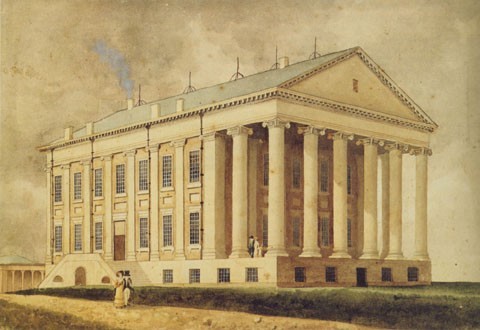
William Goodacre, Virginia Capitol in 1830, Richmond, 1830. Watercolor on paper. (Courtesy, Valentine Museum, Richmond, Virginia.)

Interior of the rotunda of the Virginia State Capitol, Commonwealth of Virginia, Richmond, 1788–1789. The Carrara marble statue of Washington was sculpted by Jean Antoine Houdon in 1788. (State Capitol, Commonwealth of Virginia, Courtesy of the Library of Virginia; Photo, Katherine Wetzel.)

William Hodgson, Ionic capitals in the Senate chamber of the Virginia State Capitol, 1789. Painted wood. (Photo, Katherine Wetzel.)

William Hodgson, truss over the east doorway of the rotunda of the Virginia State Capitol, 1789. Painted wood. (Photo, Katherine Wetzel.)

Detail of the acanthus carving on the truss illustrated in fig. 4. (Photo, Katherine Wetzel.)

William Hodgson, truss over the north doorway of the rotunda of the Virginia State Capitol, 1789. Painted wood. (Photo, Katherine Wetzel.)

William Hodgson, truss over the north central doorway on the balcony of the rotunda of the Virginia State Capitol, 1789. Painted wood. (Photo, Katherine Wetzel.)

Masonic canopy in Richmond Randolph Lodge 19, attributed to Clotworthy Stephenson and William Hodgson, Richmond, 1788–1791. (Courtesy, Richmond Randolph Lodge 19; photo, Katherine Wetzel.)

Detail of the Masonic canopy illustrated in fig. 8. (Courtesy, Richmond Randolph Lodge 19; photo, Sumpter T. Priddy III.)
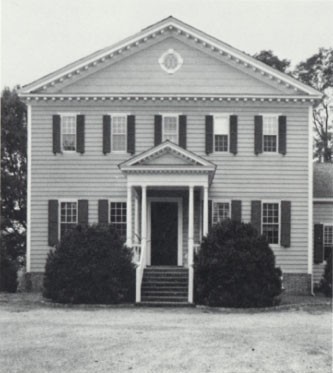
James Crumpley (builder), “Woodlands,” Amelia County, Virginia, 1789–1794. (Courtesy, Helen Scott Townsend Reed; photo, Katherine Wetzel.)
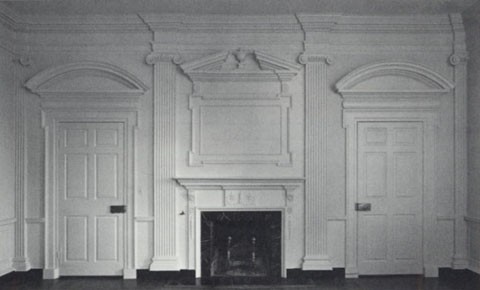
Chimney wall in the principal parlor on the first floor of “Woodlands.” The woodwork is attributed to Clotworthy Stephenson, and the carving is attributed to William Hodgson. (Courtesy, Mills Lane IV; photo, Van Jones Martin.)

Detail of the left Ionic capital of the chimney wall illustrated in fig. 11. (Photo, Sumpter T. Priddy III.)

Detail of the right truss, rosette, and husk garland on the chimneypiece illustrated in fig. 11. (Photo, Katherine Wetzel.)
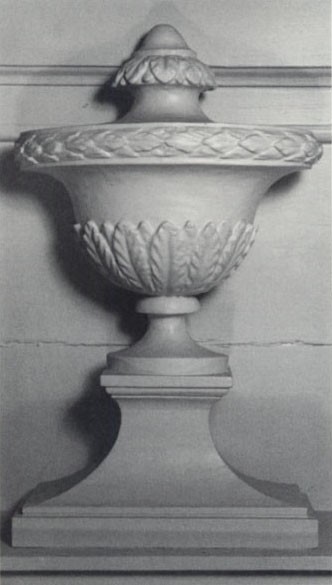
Detail of the urn ornament of the chimneypiece illustrated in fig. 11. (Photo, Sumpter T. Priddy III.)

Detail of the tablet appliqué of the chimneypiece illustrated in fig. 11. (Photo, Katherine Wetzel.)
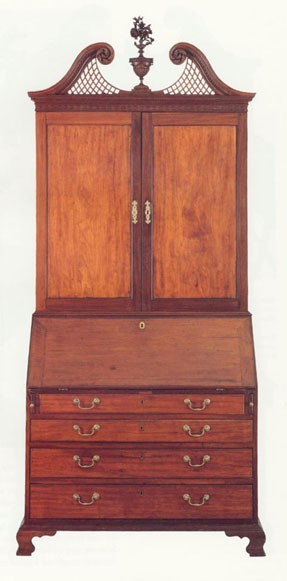
Desk-and-bookcase attributed to Henry Ingle and William Hodgson, Richmond, inscribed “Dabney Minor” and dated “Jan. 24th, 1789.” Mahogany and mahogany veneer with yellow pine, tulip poplar, walnut, birch, and cherry. H. 92 1/2", W. 44 3/8", D. 21 1/2". (Private collection; photo, Gavin Ashworth.)

Detail of the rosette of the desk-and-bookcase illustrated in fig. 16. (Photo, Gavin Ashworth.)

Detail of the urn-and-flower ornament of the desk-and-bookcase illustrated in fig. 16. (Photo, Gavin Ashworth.)

Desk-and-bookcase attributed to Henry Ingle and William Hodgson, Richmond, inscribed “B. Tanner,” ca. 1790. Mahogany and mahogany veneer with yellow pine and tulip poplar. H. 93 1/2", W. 44 1/2", D. 21 3/4". (Private collection; photo, Museum of Early Southern Decorative Arts.)

Detail of the carved plinth block on the pediment of the desk-and-bookcase illustrated in fig. 19. (Photo, Sumpter T. Priddy III.)

Desk-and-bookcase attributed to Henry Ingle and William Hodgson, Richmond, ca. 1790. (Francis Clary Morse, Furniture of the Olden Time [1902; reprinted and enlarged 1917, New York: MacMillan, 1940], p. 143; photo, Museum of Early Southern Decorative Arts.)

Desk-and-bookcase attributed to Daniel Trotter, Philadelphia, ca. 1780. Mahogany with tulip poplar and white cedar. Dimensions not recorded. (Courtesy, Girard College.)
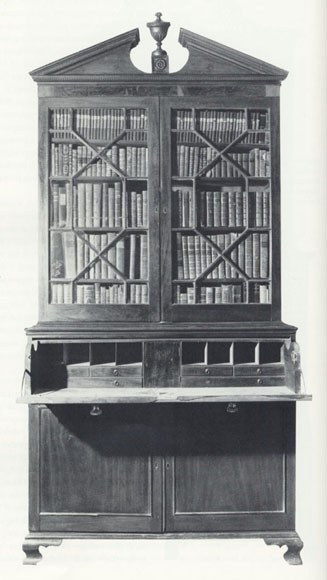
Secretary-and-bookcase attributed to Henry Ingle and William Hodgson, Richmond, ca. 1790. Mahogany and mahogany veneer with white pine, cherry, and tulip poplar. H. 99" (less ornament), W. 49 1/2", D. 23 1/4". (Private collection; photo, Museum of Early Southern Decorative Arts.)

Detail of the plinth block and ornament of the secretary-and-bookcase illustrated in fig. 23. (Photo, Museum of Early Southern Decorative Arts.)

Clothespress attributed to the school of Henry Ingle, Richmond, ca. 1790. Mahogany and mahogany veneer with yellow pine. H. 80 3/4", W. 50", D. 22 5/8". (Private collection; photo, Museum of Early Southern Decorative Art.)

Clothespress attributed to the school of Henry Ingle, Richmond, ca. 1790. Painted yellow pine. H. 83", W. 52 1/4", D. 26 1/4". (Colonial Williamsburg Foundation, acc. 1968–279.)

Secretary-and-bookcase attributed to Henry Ingle and William Hodgson, Richmond, ca. 1790. Materials and dimensions not recorded. (Edward Wenham, The Collector’s Guide to Furniture Design [New York: Collector’s Press, 1928], p. 144; photo, Luke Beckerdite.)

Library bookcase, Philadelphia, 1785–1795. Materials and dimensions not recorded. (William Mcpherson Hornor, Blue Book of Philadelphia Furniture [1935; reprinted, Washington, D. C.: Highland House, 1977], p. 251; photo, Luke Beckerdite.)

Secretary-and-bookcase, Richmond, 1790–1800. Mahogany, mahogany veneer, and unidentified light and dark inlays with tulip poplar, oak, and yellow pine. H. 88 5/8", W. 46", D. 22 3/4". (Private collection; photo, Museum of Early Southern Decorative Arts.)

Desk-and-bookcase with an urn-and-flower ornament attributed to William Hodgson, Richmond, ca. 1790. Materials and dimensions not recorded. (Francis Clary Morse, Furniture of the Olden Time [1902; reprinted and enlarged 1917, New York: MacMillan Co., 1946], p. 143; photo, Luke Beckerdite.)

Library bookcase with urn-and-flower ornament attributed to William Hodgson, England (library bookcase) and Richmond (ornament), 1770–1780 (library bookcase) and ca. 1790 (ornament). Mahogany with oak and deal. The library bookcase was altered to fit into a specific space in the principal first-floor room of the John Marshall house, built in Richmond between 1789 and 1791. (Courtesy, Association for the Preservation of Virginia Antiquities; photo, Katherine Wetzel.)
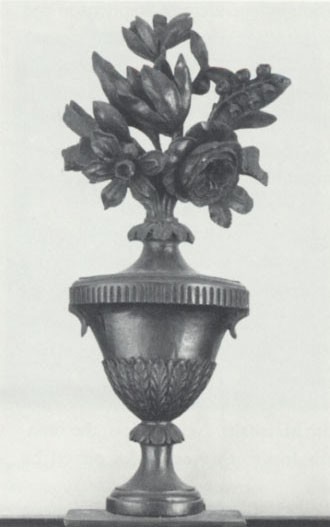
Detail of the ornament of the library bookcase illustrated in fig. 31. (Photo, Katherine Wetzel.)

Detail of the chimney-piece illustrated in fig. 31. The composition ornaments on the chimneypiece and in the metopes are attributed to William Hodgson. (Photo, Katherine Wetzel.)

Detail of one of the composition paterae in the metopes of the room illustrated in figs. 31 and 33. (Photo, Katherine Wetzel.)

Detail of the composition urn on the tablet of the chimneypiece illustrated in fig. 33. (Photo, Katherine Wetzel.)

Detail of the composition ornament depicting “Winter” on the chimneypiece illustrated in fig. 33. (Photo, Katherine Wetzel.)

Detail of the composition ornament depicting “Spring” on the chimneypiece illustrated in fig. 33. (Photo, Katherine Wetzel.)
